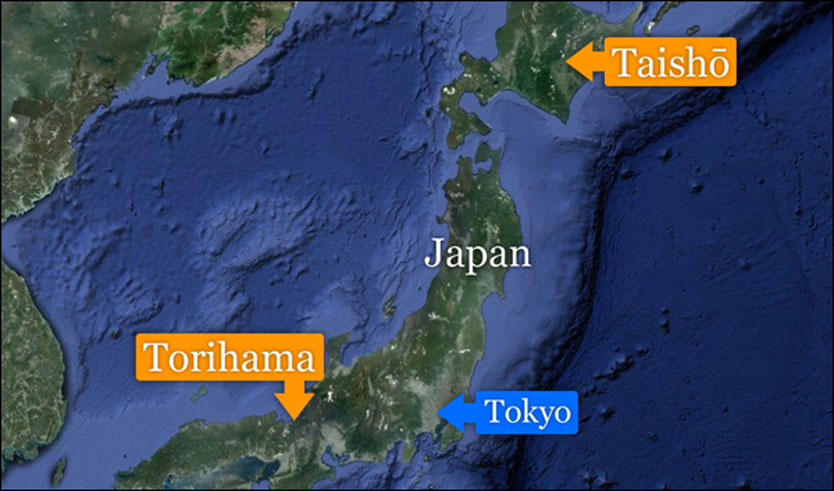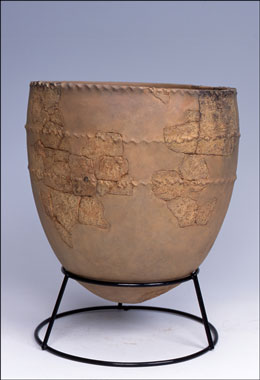 |
| class=”edrumImageCaption”> map shows two of the sites of the oldest Jomon period. In these places it is found pottery shards that are now analyzed for leftovers. Taisho 3 on the island of Hokkaido is the oldest of these findings, and here is between 15 000 and 14 000 year old. Ceramics from the main island Honshu Torihama is around 12 000 years old. (Map: Google Maps / Custom forskning.no / Per Byhring) |
Jomon culture in Japan is among the first Stone Age people we know who made pottery.
Scientists have now been able to analyze food residue on the inside of up to 15 000 year old pottery shards.
There they found traces of seafood.
Cookware ceramics are an important invention in human history.
made it possible to exploit the food in a very different way than before.
must have opened up new opportunities for both cooking and storing food.
class=”edrumParagraphtitle”> Hunters and trappers
Until recently, archaeologists believed that hunters and trappers in the stone age did not master the art of making ceramic dish.
Ceramics is heavy to drag on and break easily.
It may be logical to assume that the first was something people started making after they settled down and started farming.
See also: Stone Age People stuck on low carbon
 |
| class=”edrumImageCaption”> Reconstructed vessels of pottery from the Jomon period in Japan. This tub is from Kubodera-minami on the island of Honshu and is about 15 000 years old. (Photo: Tokamchi City Museum) |
In Japan, however, lived a hunting people who used clay vessels already 16 000 years ago. Their culture is called Jomon (also j ¿mon) for clay pots they made.
Also from other parts of Asia, Scandinavia and North America, there are now many findings showing that the hunters, not just farmers, used vessels of pottery.
class=”edrumParagraphtitle”> Fats
Burnt food is not just something we struggle with today. Fortunately scorched also Stone Age peoples food.
can now tell us what kind of food they made.
In the new study, researchers from the UK, Japan, the Netherlands and Sweden managed to extract fats from Jomon pottery.
See also: indulging in seafood on steinaldervis
have also been analysis of the elements carbon and nitrogen found on pottery conditions.
class=”edrumParagraphtitle”> boiled seafood
75 percent of the samples had chemical values ??indicate that the Japanese clay pots were used to cook fish or other seafood from freshwater or sea.
The chemical traces indicate that there are fish or marine animals high in the food chain that have ended up in the pot.
All samples are taken from the period of between 15 300 and 11 200 years ago.
class=”edrumParagraphtitle”> Caught Salmon?
Several settlements were a short distance from the coast. Contemporary sea level was 65 meters lower than today.
One possibility may be that the Jomon peoples cooked stew of salmon from the sea that was caught while it was on the rise in the rivers.
It is not found so many clay vessels from this most ancient Jomon period. Therefore, one can not know whether the men were used for daily cooking or if it was just for special holidays.
See also: On the trail of the first farmer
What is certain is that the Jomon culture was not only technologically inventive, but also sustainable.
In China and other parts of mainland Asia grew agricultural voted for perhaps as much as 11 000 years ago. Villages in the cultivation of rice and millet eventually took over for hunting.
The development came much later to Japan, where the catch based Jomon culture held sway until the last millennium BCE.
![]()
No comments:
Post a Comment